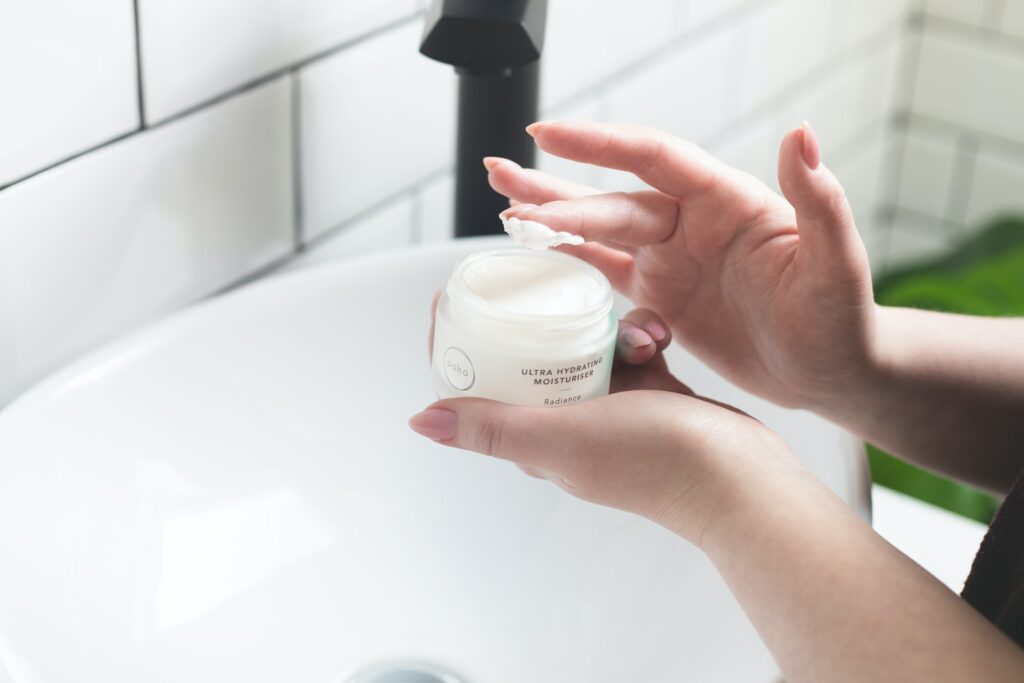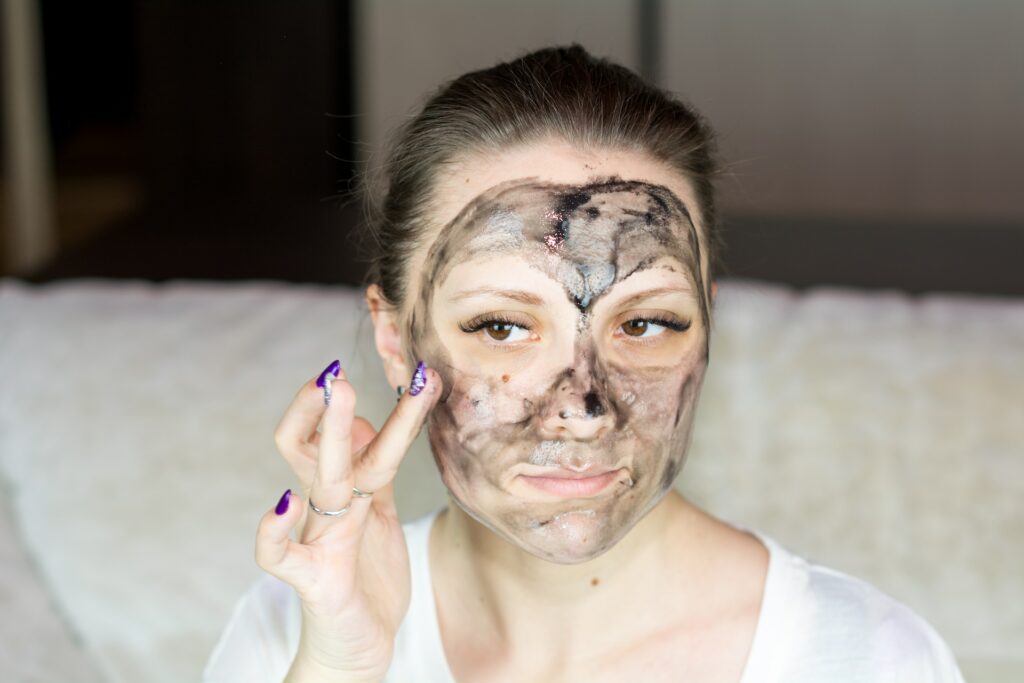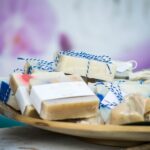Table of Contents
In this blog post, we’ll dig deep into what makes a moisturizer tick for those of us graced with the tricky task of managing Seborrheic Dermatitis. We will debunk myths, slay misconceptions, and, most importantly, unlock the golden doors to a curated list of the best face moisturizers tailored to your unique skin needs. We’ll dissect the intricate world of ingredients, unveil the brands making strides in this realm, and explore the science behind what makes a moisturizer effective for our particular skincare cause.
So, whether you’re a seasoned skin enthusiast or a beauty beginner who just got diagnosed, this blog post will equip you with the knowledge to make informed, skin-loving decisions. And remember, my fellow skincare warriors, in our pursuit of that dewy morning dream, it’s not just about finding the best product but understanding why it’s the best for you. Ready to shed the layers of doubt and reveal your skin’s true potential? Then let’s dive in because your journey to healthier, happier skin starts now!
Seborrheic Dermatitis: The Unwelcome Guest
Ever woken up to flaky, itchy skin that looks like it’s begging for hydration, yet seems excessively oily at the same time? Meet seborrheic dermatitis, a condition that gives you an unasked-for combo of redness, flakes, and greasiness in areas teeming with oil glands – like your scalp, forehead, nose, eyebrows, and even the not-so-glamorous behind-the-ears region. Picture my “why me?” face when I first saw those pesky flakes on my eyebrows!
These symptoms can range from a slight itch to a full-on discomfort depending on your age and severity. But don’t fret! We aren’t helpless here. Your dermatologist may suggest medicated shampoos or over-the-counter cortisone creams to calm the inflammation. For those with severe conditions, there are also topical antifungals. And no, don’t worry, you don’t need a prescription for everything – products that combine antifungal and moisturizing elements are available over-the-counter.
The “No-No” Ingredients For Seborrheic Dermatitis

Okay, lovely people, let’s talk ingredients. Remember when I had a full-blown red patch episode after using a heavily fragranced cream? That’s because sensitive skin, especially with Seborrheic Dermatitis, doesn’t love harsh chemicals, artificial colors, or fragrances. They may cause more harm than good to our already compromised skin barrier.
So, what to do? Embrace the power of Mother Nature! Natural oils like jojoba, hemp seed, coconut oil, and aloe vera are your skin’s best friends, providing much-needed hydration without irritation.
And here’s a golden nugget: avoid products with strong steroids or cortisone like some insect bite creams. Sure, they reduce itching temporarily but over time, they might worsen your skin condition. I learned this the hard way – that week of relief wasn’t worth the subsequent breakout!
Creating a Fortress: Protecting Your Skin Barrier
So, how do we care for our delicate skin and boost its defenses? Moisturize, moisturize, moisturize! Opt for products infused with hyaluronic acid, glycerin, shea butter, and zinc. They retain moisture, form a protective layer on your skin, and calm the inflammatory reactions, like my favorite, trusty hyaluronic acid serum I never skip at night!
“Non-comedogenic” or “oil-free” products are your go-to. They are less likely to clog pores or irritate your skin. And never forget to cleanse gently. You don’t want to strip away your skin’s natural oils, disrupt the pH balance, and cause more inflammation. Speaking from personal experience, gentle is better, darlings!
Sunscreen: Your Non-negotiable Armor

Let’s not forget our dear friend, the sunscreen. With seborrheic dermatitis, the rules are simple: go hypoallergenic, fragrance-free, and additive-free. Pick a broad-spectrum sunscreen with an SPF rating of at least 30 (the higher, the better!).
Resist the temptation to reach for tanning oils or insect repellents – they might worsen your skin condition. Trust me, your skin will thank you for it! Ingredients like zinc oxide, titanium dioxide, and avobenzone often shine in sunscreens suitable for our skin condition. Always consult your doctor or dermatologist for personalized recommendations.
And lastly, always remember my mantra: reapply every two hours when out in direct sunlight. Your skin barrier is worth protecting, my friends!
So, here we are, better equipped to manage our Seborrheic Dermatitis and show our skin some serious love. And remember, there’s no such thing as ‘perfect’ skin, just happy skin. Keep glowing, beauties!
A Dermatologist’s Guide to Moisturizing Seborrheic Dermatitis

As an absolute skin care fanatic (and a victim of Seborrheic Dermatitis myself), I know it’s no easy task to find the perfect moisturizer that plays nice with our skin. So, let’s break this down into some simple tips that I’ve learned on my journey, and trust me, they can be game-changers for you too!
Your Moisturizer Checklist for Seborrheic Dermatitis
Seborrheic Dermatitis can be tricky to deal with, but the right moisturizer can be your best ally, trust me on this! A couple of years ago, I was struggling with flaky skin that just seemed to get worse with most moisturizers. That’s when I dived deep into the ingredients world, and let me tell you, it made all the difference!
Remember, our goal is to enhance our skin barrier and keep our skin hydrated. So, opt for lightweight creams or lotions that pack the power of ingredients like salicylic acid or jojoba oil. These superheroes soothe inflammation, reduce redness, and lock in the much-needed moisture.
Don’t forget the other natural stars of skincare – aloe vera, tea tree oil, and zinc oxide. They’re known to fortify our skin’s protective barrier, provide relief from itching and flaking, and calm irritation. But always remember to stay away from heavily fragranced or greasy products. These can stir up a storm in already troubled skin and trust me, we don’t want that!
The Daily Ritual: Cleansing and Moisturizing

I cannot stress this enough, lovelies – cleanse gently and moisturize regularly. Use mild cleansers that don’t rob your skin of its essential oils. Then slather on your chosen moisturizer throughout the day to battle dryness. Especially after showers or baths, your skin will need that extra TLC to protect it from potential flare-ups.
A personal anecdote here – on one of my beach vacations, I would refresh my skin with a spritz of thermal water followed by a gentle, fragrance-free moisturizer every few hours. It kept my skin cool, hydrated, and surprisingly calm!
6 Best Face Moisturizers for Seborrheic Dermatitis
Now let’s delve into some of my favorite products that I swear by! It’s important to find one that is gentle, fragrance-free and contains ingredients known to soothe inflammation and support the skin barrier. Here are my top choices:
- La Roche-Posay Lipikar Baume AP+M: This is a replenishing balm that is great for sensitive skin. It’s formulated with Shea Butter, Niacinamide, and La Roche-Posay’s Prebiotic Thermal Water to soothe, hydrate, and protect the skin.
- CeraVe Facial Moisturizing Lotion: A daily moisturizer that is formulated with hyaluronic acid to help retain skin’s natural moisture and niacinamide to help calm skin. Plus, it contains three essential ceramides (1, 3, 6-II) to help restore the protective skin barrier.
- Cetaphil Pro DermaControl Oil Absorbing Moisturizer: Formulated for oily skin, this moisturizer provides broad-spectrum sunscreen protection while keeping your skin hydrated without causing breakouts.
- Vanicream Moisturizing Cream: This is a great option for those with sensitive skin as it’s free of dyes, fragrance, lanolin, parabens, and formaldehyde which are common irritants. It also helps restore and maintain a normal moisture level while soothing red, irritated, cracking, or itchy skin.
- Eucerin Q10 Anti-Wrinkle Sensitive Skin Cream: This cream is formulated with antioxidants like Vitamin E, Beta-Carotene, and Coenzyme Q10 to protect against the damaging effects of free radicals. It’s free of fragrances and alcohol, so it won’t irritate sensitive skin.
- Aveeno Ultra-Calming Nourishing Night Cream: This is a good choice for those with extra sensitive skin. It’s made with feverfew, a known skin-soothing ingredient, and oat, a natural skin-soother, to help calm irritated skin.
As always, remember that everyone’s skin is different. What works well for one person may not work for another. Always do a patch test before trying a new product, and consult a dermatologist if you’re unsure.
5 Other Natural Ingredients To Consider
- Tea Tree Oil: Known for its antifungal and anti-inflammatory properties, tea tree oil can help soothe the skin and potentially reduce the yeast that contributes to seborrheic dermatitis. However, it’s potent, so it should be diluted before use to avoid skin irritation.
- Apple Cider Vinegar: Some people find relief by applying diluted apple cider vinegar to their skin. It’s believed that the acidity of the vinegar can help to adjust the pH of the skin, making it a less hospitable environment for the yeast that contribute to seborrheic dermatitis.
- Honey: Raw, unprocessed honey has antimicrobial properties and can be soothing when applied to the skin. It’s also a natural humectant, meaning it draws water into the skin, helping to keep it hydrated.
- Olive Oil: Olive oil can be helpful for loosening the scales associated with seborrheic dermatitis. Applying a small amount to the affected area, allowing it to sit, and then gently removing with a comb can be beneficial.
- Chamomile: Known for its anti-inflammatory properties, chamomile can be soothing to irritated skin. Try adding a few drops of chamomile essential oil to a carrier oil or lotion and applying it to the affected areas.
Other Treatments For Seborrheic Dermatitis To Consider
Seborrheic dermatitis can be a tricky skin condition to manage, but thankfully, in addition to medicated shampoos and cortisone creams, there are various other treatment options you can explore:
- Topical Antifungals: These medications can effectively treat the yeast that often plays a role in causing seborrheic dermatitis. Creams or gels containing ketoconazole, ciclopirox, or selenium sulfide are commonly used.
- Topical Calcineurin Inhibitors: Tacrolimus (Protopic) and pimecrolimus (Elidel) creams are two examples of topical calcineurin inhibitors that are often effective in treating seborrheic dermatitis when other treatments fail. They work by suppressing the immune system to reduce inflammation and prevent flare-ups.
- Light Therapy: Phototherapy, which uses ultraviolet light to improve skin conditions, can also be beneficial in some cases. However, it’s usually used for severe cases or when other treatments have not been successful because it requires special equipment and multiple visits to a healthcare provider.
- Coal Tar: Some people find that coal tar shampoos can help reduce scaling, itching, and inflammation. Coal tar can be a bit smelly and messy but is generally effective.
- Lifestyle changes: Things like managing stress, regular gentle cleansing of the skin and scalp, maintaining a healthy diet, and avoiding known triggers (such as certain skincare products or extreme weather conditions) can also help manage symptoms.
- Natural remedies: Some natural remedies such as tea tree oil, aloe vera, apple cider vinegar, or honey are claimed to help soothe the skin and reduce inflammation. However, the effectiveness of these treatments is not as well-studied, and they should be used with caution as they can sometimes cause further irritation.
Always remember to consult with a healthcare provider or a dermatologist to discuss these options and determine the best treatment plan for your unique needs. Every person is different, and what works for one person may not work for another.
Conclusion
And there you have it, my skincare savvy friends! We’ve walked through the crucial aspects of choosing the perfect moisturizer for our beloved skin dealing with Seborrheic Dermatitis. Remember, the secret lies in fortifying our skin barrier and quenching its thirst for hydration. Opt for light, non-irritating formulations rich in ingredients like salicylic acid, jojoba oil, aloe vera, and tea tree oil. Steer clear of heavily fragranced or oily products to keep flare-ups at bay. Your skincare routine should always involve gentle cleansing, followed by ample moisturization throughout the day.
As we discussed, there are a plethora of products like La Roche-Posay Lipikar Baume AP+M, CeraVe Moisturizers, Cetaphil Pro DermaControl, Vanicream, and Eucerin that could potentially become your skin’s new best friend. But always remember, each person’s skin is unique. What works for one may not work for another. Listen to your skin, experiment carefully, and consult a dermatologist if needed.
Finally, bear in mind that while the right skincare routine can help manage the symptoms of Seborrheic Dermatitis, it isn’t a substitute for medical treatment, if required. Skincare is a journey, my dears, with its fair share of trials and errors. So, be patient and gentle with your skin and yourself. You’re not alone in this journey, and remember, your skin’s condition doesn’t define your beauty. So, stay informed, stay positive, and take that first step towards happier skin. Remember, you’re beautiful just the way you are. So, keep glowing and keep growing!
Feature image by Lilli P. on Unsplash




